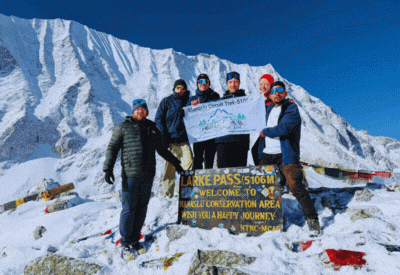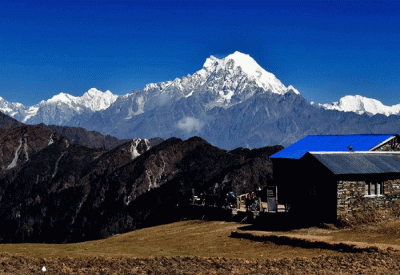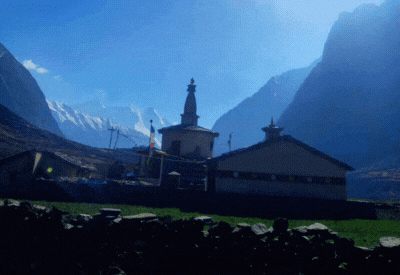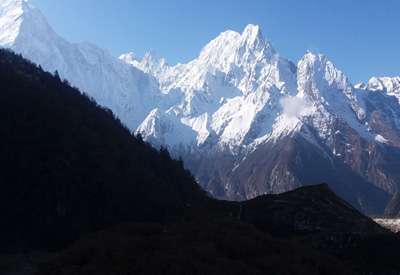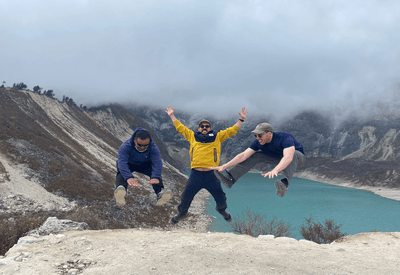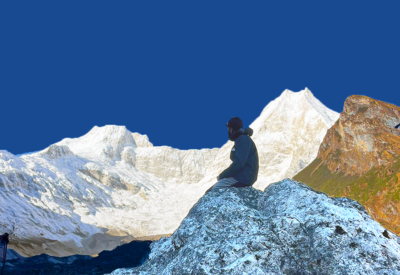Note - Manaslu Trek is consider as a restricted trekking route, so you need minimum 2 people for this trip or you need to buy an extra permit, single travellers are not permitted to this trail.
This 13 Days Manaslu Circuit Trek is a Budget Friendly spectacular journey filled with breathtaking views, unique cultural encounters, and challenging terrains. To ensure a safe and enjoyable trek, preparation is key.
What Sets the Manaslu Circuit Trek Apart?
When comparing the Manaslu Circuit Trek to the bustling trails of the Everest Base Camp and Annapurna Circuit, one of the standout differences is the crowd density. Unlike these popular routes swarming with trekkers from all around the globe, the Manaslu Circuit offers a more secluded experience. This less-traveled path provides trekkers with a sense of solitude, enhancing the adventurous spirit of the journey.
In terms of physical exertion, the Manaslu Circuit Trek is no lightweight. It presents a remote and demanding challenge, requiring trekkers to be well-prepared for its rigorous terrain. Despite the physical demands, or perhaps because of them, the trek offers a rich cultural experience and breathtaking scenic views, rewarding adventurers with unique glimpses into local life and stunning natural beauty that aren't as easily accessible on the more popular treks.
Cultural and Geographical Significance of the Tibetan Border on the Manaslu Circuit Trek
The Tibetan Border stands as a remarkable landmark within the Manaslu Circuit Trek, located in the northern reaches of Nepal. This remote area forms a natural boundary with Tibet (China) and is renowned for its dramatic geography and profound cultural resonance.
Stunning High-Altitude Terrain
The geographical features here are nothing short of breathtaking. The region is defined by its soaring altitudes, showcasing majestic mountain vistas and barren valleys. These rugged conditions create a landscape that is both challenging and awe-inspiring, making it a bucket-list destination for adventurous trekkers seeking solitude in nature.
A Rich Tapestry of Tibetan Culture
Beyond its stark beauty, the Tibetan Border is a cultural cornerstone. The area teems with traditional Tibetan villages and nomadic settlements. Here, residents maintain practices and speak a language deeply rooted in Tibetan heritage. The continuity of these customs provides visitors with an authentic glimpse into a way of life that has endured for centuries.
An Intersection of History and Spirituality
This region is interwoven with historic trade routes that once bustled with activity, linking communities and fostering cultural exchange. Today, these paths lead to places of spiritual significance, including ancient monasteries and gompas. These sacred sites reflect the enduring influence of Tibetan Buddhism, offering a serene environment for reflection and exploration.
A Less-Traveled Path
While its remote and challenging environment means fewer tourists venture here, the Tibetan Border offers a rare chance to immerse oneself in untouched cultural landscapes. Travelers are rewarded with a tranquil experience, witnessing a slower pace of life that feels worlds apart from modern hustle.
In summary, the Tibetan Border on the Manaslu Circuit Trek is a confluence of geographical grandeur and cultural depth. It invites those who visit to marvel at its natural beauty while engaging deeply with the rich tapestry of Tibetan traditions.
Right Time for Manaslu Trek
The best time for the Manaslu Circuit Trek is in spring (March–May) and autumn (September–November). These months offer clear skies, moderate temperatures, and stunning views of the Himalayas.
Understanding Altitude Sickness on the Manaslu Trek
When trekking the stunning Manaslu Trail, being aware of altitude sickness symptoms is essential. Altitude sickness, or Acute Mountain Sickness (AMS), can affect trekkers as they ascend to higher altitudes.
Common Symptoms
Headaches: Often the first indicator, these can progress in severity as you climb higher.
Nausea: A feeling of queasiness, sometimes accompanied by vomiting.
Dizziness: A sensation of lightheadedness that may affect balance.
Shortness of Breath: Breathing difficulty can increase with exertion as you ascend.
Fatigue: Unusual tiredness even after resting.
Preventive Measures
Acclimatization: Gradually adjusting to the altitude is crucial. Plan rest days at certain elevations.
Hydration: Keep yourself well-hydrated throughout the trek.
Immediate Action: Should symptoms persist, it's vital to inform your guide promptly.
Remember, recognizing these symptoms early can help in taking necessary actions to ensure a safe trekking experience.
Challenges of Manaslu Trek
Trekkers on the Manaslu trail encounter unique challenges when it comes to suspension bridges and the effects of the monsoon season. These bridges are not just impressive in their length and soaring height, but also crucial for crossing some of the most rugged terrain. However, their reliability is often tested by the annual monsoon rains.
Monsoon Season Impacts
Destructive Rains: Each year, torrential monsoon rains can pose significant obstacles, frequently resulting in the destruction of smaller bridges.
Alternative Routes: When minor bridges are washed away, trekkers are sometimes forced to find alternative paths, such as balancing across semi-submerged rocks, which can be both tricky and dangerous.
Suspension Bridge Challenges
Height and Exposure: The impressive height of these bridges can be daunting, especially for those who are not fond of heights.
Weather Vulnerabilities: The structural integrity of these bridges can be compromised during heavy rains and high winds, adding an element of risk.
Navigating these challenges requires caution and preparation. Trekkers should be ready to adapt, maintain a steady pace, and have a strong sense of balance to safely cross these critical parts of the trek.
Acclimatization is Key
Trekking at high altitudes, especially for the first time, requires careful preparation and awareness. As this 13 Days Manslu Trek reaches altitudes over 5,100 meters (Larkya La Pass), understanding and managing the risks of altitude sickness becomes essential.
Altitude Awareness: Altitudes above 3,000 to 3,500 meters can affect your body, with symptoms potentially starting to appear as you climb higher. It's crucial to recognize these signs early.
Acclimatization Strategy: Plan rest days in places like Samagaun or Samdo. These breaks are vital for allowing your body to adjust to the decreasing oxygen levels. Stay hydrated and ascend gradually to help mitigate symptoms.
Expert Guidance: Experienced guides accompany you, each with years of trekking expertise. They are trained to recognize and handle altitude-related issues, ensuring your safety and comfort. Always communicate with your guide if you feel unwell at any stage.
By following these guidelines and utilizing the support of seasoned professionals, you can enhance your trekking experience while prioritizing safety and enjoyment.
Weather at Manaslu Region
Weather in the Himalayas can change rapidly, causing delays. Stay adaptable and enjoy the journey!
Understanding Temperature Trends on the Manaslu Circuit
When planning your trek on the Manaslu Circuit, knowing the temperature trends can help you prepare effectively. Here’s a breakdown of what to expect throughout the year:
Spring (March to May)
- Daytime: Temperatures generally remain mild, allowing for comfortable trekking conditions. Expect daytime highs ranging from 10°C to 20°C (50°F to 68°F).
- Nighttime: Evenings can be chilly, with lows dipping to around -6°C to 5°C (21°F to 41°F).
Summer (June to August)
- Daytime and Nighttime: This season sees the highest temperatures but also the monsoon rains. Daytime highs can reach up to 25°C (77°F), while nighttime may still drop to around 10°C (50°F). Be prepared for wet conditions.
Autumn (September to mid-December)
- Daytime: A popular season for trekking, you’ll find pleasant daytime temperatures between 12°C to 18°C (54°F to 64°F).
- Nighttime: Nights become cooler, often reaching lows of -3°C to 5°C (27°F to 41°F).
Winter (mid-December to February)
- Daytime: While the days are still manageable for trekking, with highs around 6°C to 12°C (43°F to 54°F), temperatures are notably cooler.
- Nighttime: Expect frigid nights, with temperatures often dropping to -15°C to -6°C (5°F to 21°F).
Packing Tips
The region’s weather can be unpredictable, especially in mountainous terrains. Even in the drier seasons like Spring and Autumn, it’s wise to carry layers and a rain jacket as a precaution. For a complete packing list, consider resources from established outdoor brands like REI or The North Face for guidance on essential gear.
Training for Manaslu Circuit Trek
The Manaslu circuit trek difficulty is moderate to challenging. This trek is not recommended for inexperienced trekkers, as it requires a high level of physical fitness. The high altitude presents a significant challenge for everyone, and it can be a real struggle for those who are unfit or have medical issues.
To prepare, focus on:
Cardio exercises like running or cycling to build stamina.
Strength training to enhance endurance.
Practice hikes with a loaded backpack to simulate trek conditions.
If you're in very good physical shape, this trek is a rewarding adventure that will push you to achieve more. For those who are fit, the Manaslu Circuit offers a fulfilling and exhilarating experience.
Permits for Manaslu Circuit Trekking
The Manaslu Circuit Trek requires several permits:
Restricted Area Permit (RAP): The cost varies based on the season. From September to November, the fee is $100 USD per person for the first seven days, with an additional $15 USD per day thereafter. From December to August, the cost is $75 USD per person for the first seven days, and $10 USD for each extra day. Note that you must trek with a licensed guide and a minimum of two trekkers is required.
Manaslu Conservation Area Permit (MCAP): This permit costs 3,000 NPR (approximately $25 USD) per person.
Additionally, you will need the Annapurna Conservation Area Permit (ACAP) since part of the trek overlaps with the Annapurna Conservation Area. This permit also costs 3,000 NPR (approximately $25 USD) per person.
Ensure you apply through a registered trekking agency like HimalayaHub to simplify the process. You'll need to provide passport copies and passport-sized photographs. Keep in mind, solo trekking is not allowed, emphasizing the need for a licensed guide.
Required Tools and Gear for Manaslu Circuit
Having the right gear is essential for comfort and safety during the Manaslu Circuit Trek:
Clothing: Layered outfits, thermal wear, and waterproof jackets are crucial for adapting to the trek’s variable weather conditions.
Footwear:
Trekking Boots: Opt for sturdy, waterproof trekking boots that offer good ankle support. This feature is vital for navigating the rocky and uneven paths of the circuit.
Camp Shoes: Lightweight shoes are ideal for relaxing in lodges, allowing your feet to recover after a long day of trekking.
Socks: Pack both thermal socks for cold nights and regular socks for daytime trekking to ensure comfort and warmth.
Gear: In addition to footwear, bring walking poles and a high-quality sleeping bag to enhance your trekking experience.
Extras: Don't forget essentials like water purification tablets, a first-aid kit, and energy bars to keep you fueled and safe throughout the journey.
By carefully selecting each item, you’ll be well-prepared to tackle the trek with confidence and ease.
For a successful trek, it's essential to pack a few key miscellaneous items alongside the basics. Ensure you have a first-aid kit for any unexpected injuries and include any personal medications you may need. Water purification tablets are crucial to guarantee safe drinking water, especially in remote areas where clean water may not be readily available.
Protection from the elements is just as important; pack sunscreen, sunglasses, and a hat to shield yourself from the potent UV rays encountered at high altitudes. These items can make a significant difference in your comfort and safety during the trek.
Remember, each item plays a vital role in ensuring your trek is not only enjoyable but also safe.
Health Preparedness:
Before setting off, consult with your doctor about recommended vaccinations for Nepal, such as hepatitis A, typhoid, and tetanus. This proactive step can help prevent illness during your journey.
Ensure your first-aid kit is well-stocked with basic medical supplies, including bandages, antiseptic wipes, and pain relievers. Don't forget to include any personal medications you may need, ensuring you're prepared for any health issues that might arise along the trek. This personalized approach to packing will help you stay safe and healthy throughout your adventure.
Check out our complete 13 days Manaslu Circuit packing guide for more details.
Transport and Accommodation Notes
Transport: The trek typically uses public buses. If you prefer private transportation, arrange it in advance, though it may involve an additional fee.
Accommodation: Note that single rooms are rare on the trek, and solo travelers should expect to share rooms with someone of the same sex.
What Types of Food Are Available on the Manaslu Trek?
The Manaslu Trek offers a unique culinary experience, though the menu reflects the trek’s restricted access and limited number of annual visitors. While offerings might not be as diverse as those on more well-trodden trails, you'll find hearty and satisfying meals that fuel your adventure.
Breakfast Delights
Start your day at the teahouse with:
Spicy Nepali Omelet: Infused with chili, onions, and tomatoes.
Hot Porridge: Served with milk for a warm, comforting start.
Breads and Spreads: Choose between toast or Tibetan bread, complemented by jam or honey.
Beverages: Sip on Nepali spiced tea or try the unique salty Tibetan tea. Coffee might be an option depending on availability.
Midday Fuel
For lunch, you’ll typically stop at a small teahouse along the trail to enjoy:
Dal Bhat: A staple dish comprised of rice accompanied by curry and lentils.
Noodles: A simple and quick energy booster.
Refreshments: Wash it down with Nepali tea or a soft drink.
Evening Meals
After a long day of trekking, dinner at your overnight teahouse might include:
Soups: Warm up with various options such as flavorful garlic soup.
Tibetan Bread and Momos: When available, savor these Tibetan specialties. Momos are dumplings filled with either vegetables or meat.
Rice and Noodles: Choose between fried noodles with vegetables or fried rice.
Dal Bhat: Always a reliable option if you're extra hungry.
Dessert and Drinks: Indulge in rice pudding, complemented by soft drinks, local beer, or a steaming cup of Nepali tea.
If you find yourself in Namrung, you might even stumble upon a guesthouse boasting a modern restaurant that serves up surprising delights like cappuccinos. Regardless of where you stop, it's wise to pack a few snacks to ensure you're well-nourished between meals.
Accomodation and Aminities During Manaslu Trek
Teahouses along the Manaslu Trek offer essential comforts amid breathtaking landscapes. Expect basic accommodation in twin rooms or dormitories, where sharing is the norm. Single rooms are a rare find, typically available only in the off-season.
Facilities and Amenities:
Bathrooms: Shared facilities featuring either Western-style or squat toilets.
Showers: Cold water comes standard; hot water is a luxury for which you'll pay a small fee.
Sleeping Arrangements: Rooms come with beds and blankets, but bringing your own sleeping bag is advisable due to the lack of heating.
Dining and Social Experience:
Enjoy breakfast and dinner around communal tables, where the day's stories and experiences are exchanged.
Menus offer a variety of dishes and typically provide boiled water to minimize environmental impact. Consider bringing sterilization tablets or a LifeStraw for added convenience.
Energy and Charging:
These teahouses are more than just a place to rest; they are a hub of camaraderie and cultural exchange, enhancing your trekking experience.
Local Culture in Manaslu Trek
The Manaslu region is rich in Tibetan-Buddhist culture. Trekking through this area offers an immersive experience that goes beyond the stunning landscapes. The local culture and people add a profound layer to the journey, enriching every moment.
Encountering the warm hospitality of the Nepalese people, trekkers often find themselves touched by the genuine kindness that defines the region. It's this human connection that leaves a lasting impression, making the trekking experience truly unforgettable.
To honor this unique culture, show respect by:
- Following local customs and etiquette.
- Avoiding disrespectful behavior in monasteries.
- Supporting eco-friendly trekking practices.
These actions not only demonstrate respect but also deepen the connection with the local community. The attentiveness and deep knowledge of local guides further elevate the journey, transforming a trek into a meaningful cultural exchange.
Embrace the opportunity to engage with the community, and let their stories and traditions enhance your experience. In this way, the Manaslu region becomes more than just a destination—it becomes an enduring memory shaped by its people and their rich cultural tapestry.
To truly immerse yourself in the Manaslu region's cultural tapestry, it's essential to engage with the customs and traditions of the local Nubri and Tsum communities. These groups are deeply influenced by Tibetan culture, and their practices are integral to the trekking experience.
Cultural Practices and Traditions
When you encounter monasteries and mani walls—stone structures inscribed with prayers—remember to walk clockwise around them. This gesture is a sign of respect for the religious beliefs held by the locals.
Etiquette Tips
- Greeting Locals: Exchange a warm "Namaste" with your palms pressed together to greet the people you meet.
- Dress Code: Modesty is key, especially in villages and at religious sites. Opt for long trekking pants to maintain warmth and demonstrate cultural sensitivity.
- Photography Etiquette: Always seek permission before capturing photos of locals, particularly in villages or near religious landmarks.
- Visiting Religious Sites: Remove your shoes before entering monasteries, and ensure your attire is conservative.
- Public Behavior: Public displays of affection are uncommon in rural areas; it's best to refrain from such gestures.
By observing these cultural norms, you not only show respect but also enrich your overall experience in this remarkable region.
Local Customs and Traditions of the Nubri and Tsum Ethnic Groups
The Nubri and Tsum communities are rich in customs deeply influenced by Tibetan culture. Their way of life is interwoven with spiritual practices and reverence for tradition. Here’s a glimpse into some of these cherished customs:
Religious Practices: Central to their culture are the breathtaking monasteries, which serve as hubs for both spiritual gathering and education. These sanctuaries are pivotal to preserving their cultural heritage.
Mani Walls: Throughout the region, you’ll find mani walls—stone structures engraved with sacred prayers. These serve not only as spiritual symbols but as constant reminders of the community’s devotion.
Walking Rituals: An essential custom when navigating around mani walls or stupas is to walk clockwise. This gesture, deeply rooted in the culture, signifies respect and aligns with their spiritual practices.
The Nubri and Tsum communities' customs are more than traditions; they are a way of life, ensuring their rich cultural identity continues to thrive.
Trekking Essentials for Manaslu Circuit Trek
Licensed Guide for Manaslu Circuit Trekking
Hiring a licensed guide for Manaslu enhances your safety and experience. Guides provide:
- Expert navigation on remote trails.
- Insights into local culture and history.
- Assistance in emergencies.
Imagine embarking on a challenging trek, surrounded by awe-inspiring views and diverse fellow travelers. A professional guide transforms this journey into an unforgettable adventure. Their deep knowledge of the Manaslu Circuit is evident from the first step. Not only do they expertly navigate the trails, but they also breathe life into the trek with fascinating stories and cultural insights.
Our guides are attentive and supportive, ensuring that even the toughest days are enjoyable. Their warm presence and ever-present smile create a welcoming atmosphere, encouraging camaraderie within the group. With a quick wit and humor, they lighten the mood, making the journey as fun as it is rewarding.
Guides like these are invaluable, offering reassurance every step of the way. They bring together diverse groups, ensuring each person achieves their desired experience. All you need to do is take it slow and steady—everything else is taken care of.
Leave No Trace
Practice eco-friendly trekking by:
Connectivity and Power during Manaslu Trek
Electricity is limited in remote villages of Manaslu Circuit Region. Bring:
Many teahouses do offer some form of electricity, often solar-powered. However, with most trekkers carrying chargeable devices, teahouse owners typically charge a fee for using their power outlets. Expect to pay around $2 to $3 to charge your phone or camera.
Given the stunning landscapes you'll want to capture, these costs can add up quickly. To avoid this, consider investing in a solar charger that conveniently clips onto your day pack, allowing you to harness the sun's energy as you trek. By planning ahead, you can ensure your devices stay powered without breaking the bank.
Wi-Fi is available in most tea houses, offering a convenient way to stay connected with the world. However, if you need to make a phone call back home, some tea houses offer a SAT phone for a small fee, ensuring you can reach out when necessary.
Local telephone services are often unreliable on this trek. For better mobile coverage, consider using a SIM card from Nepal Telecom, as it generally offers stronger reception compared to other providers in the Manaslu region.
By preparing with the right tools and understanding the connectivity options available, you can maintain communication throughout your adventure without a hitch.
Cost of Manaslu Circuit Trek
The cost of the Manaslu Circuit Trek 13 Days varies depending on factors like group size, accommodations, and guide/porter services. On average:
👉 Additional costs may include Wi-Fi, hot showers, and tipping guides and porters.
During the Manaslu Trek, hot showers are available, but be prepared to pay around $3 to $5 per shower. The cost varies depending on the height of your lodge. This is because hot water is typically generated by gas cylinders, which must be carried up the mountain—a process that involves considerable effort and expense.
Pro Tip: Consider conserving energy (and your cash) by limiting your showers. The chilly weather might make the effort of undressing and redressing more trouble than it's worth.
How Much Cash Should You Carry Daily on the Manaslu Trek?
When planning for the Manaslu Trek, budgeting your daily expenses carefully is crucial. Ideally, you should aim to carry between $10 and $15 per day.
Daily Expenditures Breakdown:
Basic Needs: This amount can cover essentials such as a warm shower or charging your electronic devices.
Treats and Refreshments: It’s also sufficient for treating yourself to the occasional soft drink or beer at teahouses along the route.
Exclusions: Remember, this budget does not include tips for your guide or support crew, so plan to have extra cash on hand for gratuities.
This balanced budget ensures you can enjoy your trek without financial worry, while also leaving room for any unexpected needs.
Money Exchange Options in Kathmandu for the Manaslu Trek
Planning a trek to Manaslu? Here’s a comprehensive guide to handling your money in Kathmandu before you embark on your journey.
ATMs in Kathmandu
Availability: Kathmandu is well-equipped with numerous ATMs to serve both locals and travelers.
Card Acceptance: Most ATMs cater to international visitors by accepting both Visa and Mastercard.
Withdrawal Limits: Be aware that each ATM transaction may have a withdrawal limit. Plan accordingly to ensure you have enough cash for your trek.
Using Currency Exchange Booths
Exchange Rates: Exchange rates fluctuate daily, so it’s a good idea to compare rates at different booths to get the best deal.
Hard Currency Only: These booths accept only hard currency (cash) for conversion into Nepali rupees. Credit or debit cards are not an option here.
Preparing Before the Trek
Since ATMs are not available on the trek, it’s important to organize your finances before setting off. Here are a few tips:
Bring Cash: Consider carrying some widely accepted currencies like US dollars, British Pounds, Australian Dollars, Singaporean Dollars, Malaysian Ringgit, and Euros. These can easily be exchanged at money changer booths.
Transaction Fees: While some shops in big cities might accept Visa and Mastercard, expect an extra 3-4% charge per transaction.
By planning ahead and understanding your money exchange options, you can focus on enjoying your trek without worrying about cash shortages or unexpected fees. Safe travels and happy trekking!
Preparing for Your Arrival in Kathmandu for the Manaslu Trek
Arriving in Kathmandu kicks off your adventure to the Manaslu Trek. While hotel accommodations are typically not included with most trekking packages, airport pickup often is.
Navigating the Airport
As you exit the airport, look for your name on a card held by the transport service at the arrival gate. It's common for some individuals to offer help with your luggage in exchange for a tip—politely refuse if you don't wish to engage.
Meeting Your Trek Team
Before you set out on the trek, it's crucial to connect with your guide and team. Be sure to have a contact number for your guide. Arrange a specific day and time for a pre-trek meeting to discuss the details.
Notify your guide in advance of your arrival about the hotel where you'll be staying in Kathmandu. This ensures easy communication and planning before your journey begins.
Emergency Protocols for Trekking
When facing emergencies like landslides, avalanches, or sudden illnesses during high-altitude treks, it's crucial to have a plan. Here's a step-by-step guide to ensure safety:
Follow Your Guide
Listen and Act Quickly: Your trekking guide is your best resource in emergencies. They possess the training and experience to manage unexpected situations efficiently.
Stay Calm: In chaotic scenarios, your guide will provide instructions that are vital for your safety. Remaining calm helps you follow directions accurately.
Insurance Matters
Secure Adequate Coverage: Before embarking on your trek, ensure you have comprehensive travel insurance. This should include high-altitude trekking and cover both medical emergencies and helicopter evacuations.
Know Your Policy Details: Familiarize yourself with your insurance policy's specific provisions for emergencies. This knowledge is crucial if you need to access services quickly.
Evacuation Procedures
Coordinate with the Guide: If evacuation becomes necessary, your guide will coordinate the process, often communicating with emergency services and helicopter operators.
Be Prepared to Move: Depending on the nature of the emergency, you may need to move to a safer location. Follow your guide's directions to a designated evacuation point if required.
Communication
Stay Informed: Keep lines of communication open. Your guide may use radios or satellite phones to coordinate rescue efforts.
Inform Your Group: Ensure that anyone in your group who is not with the guide knows the current situation and what steps will be taken next.
By adhering to these protocols, you can navigate emergencies with greater confidence. Keeping these measures in mind enhances safety for yourself and your fellow trekkers.
How Trekking Enthusiasts Can Boost the Local Economy
When embarking on a trekking adventure, there are several impactful ways to contribute positively to the local economy:
Choose Local Accommodations: Opt for staying in family-run guesthouses and tea houses. These places often provide a more authentic experience and directly benefit the community.
Purchase Local Products: Look for markets offering regionally crafted goods and souvenirs. Handcrafted items not only make unique mementos but also support the artisans who create them.
Hire Local Guides and Porters: Employing local tour guides and porters ensures that your trip benefits those who know the terrain best. Additionally, it provides financial support to their families.
Eat Local Cuisine: Dining in locally owned eateries offers a taste of authentic flavors and injects resources into the local economy. It's a delicious way to support businesses that rely on tourism.
Participate in Community-Based Tours: Join tours and activities managed by local community groups. This not only enriches your experience but also strengthens community-driven initiatives.
By making these mindful choices, trekkers can actively participate in sustaining and invigorating the local economies of the areas they visit.
What Vaccinations Are Recommended for Travelers to Nepal?
When planning your trip to Nepal, it's essential to consider health precautions, including vaccinations. Before you embark on your adventure, consult with a healthcare professional to discuss the following recommended vaccinations for your journey:
Hepatitis A: This vaccine is advisable as you might be consuming food or water in areas where sanitation is not up to standard.
Typhoid: Particularly if you plan to stay with friends or family, or if you are an adventurous eater exploring local cuisine, a typhoid vaccine is a wise precaution.
Tetanus: Keeping your tetanus vaccination up to date is crucial, as this bacteria is widespread and can enter the body through cuts or wounds.
It's always beneficial to verify with your doctor, as they might suggest additional vaccines based on your specific travel itinerary and health status. Staying informed and prepared ensures a healthier and more enjoyable trip.
Extending Your Stay in Nepal: Beyond the Manaslu Trek
If you're planning to extend your Nepal adventure beyond the Manaslu Trek, a variety of enticing options await to enrich your journey.
Expand Your Trekking Experience
Start by enhancing your trek from 14 to 21 days by exploring the Tsum Valley, a newly accessible region offering breathtaking scenery and cultural insights. This addition promises a deeper dive into Nepal’s captivating landscapes and vibrant traditions.
Discover More of Nepal
For those eager to explore beyond Manaslu, there's a wealth of possibilities. Consider heading to Pokhara, known for its serene lakes and stunning mountain views. Whether you're seeking relaxation or adventure, we can assist with arranging transportation and lodging to make your visit seamless.
Explore National Parks
Nature enthusiasts may be drawn to Nepal's renowned national parks. Chitwan National Park offers an incredible wildlife experience with opportunities to see rhinos and tigers in their natural habitat. Alternatively, Bardia National Park presents a less-traveled path providing unique encounters with Nepalese wildlife and culture.
Cultural Excursions
Short on time? Delve into the cultural richness of Nepal with a guided tour of Kathmandu's heritage sites. Wander through ancient streets filled with history, sacred temples, and vibrant local life, offering a fascinating glimpse into the country's storied past.
No matter your interest or schedule, extending your stay in Nepal promises further adventure and discovery. Whether exploring the untouched valleys or immersing in wildlife and culture, there's something remarkable at every turn.
Final Thoughts
This 13 Days Manaslu Circuit Trek is a once-in-a-lifetime experience, offering breathtaking views, a sense of achievement, and cultural insights into the Manaslu region. With the right preparation and mindset, a normal person can definitely conquer this trek.
Are you ready to take the first step toward Manaslu Circuit Trek? Let the mountains call!
Embark on Your Manaslu Circuit Trek – Booking Open for 2025 & 2026!
Experience the thrill of a lifetime with our 13-day Manaslu Circuit Trek – an adventure that combines breathtaking Himalayan landscapes, a detailed itinerary, and a clear cost breakdown. Designed for trekkers seeking both excitement and comfort, this journey is your gateway to exploring one of the most awe-inspiring circuits in Nepal..Let HimalayaHub guide you every step of the way on this unforgettable.
Why Choose Our Manaslu Circuit Trek?
Expert Guides
Our local guides are not just knowledgeable; they’re passionate about sharing the rich culture and beauty of the Himalayas.
Authentic Experiences
We focus on providing authentic, immersive experiences by connecting you with local communities and offering you a chance to explore Nepal
Customized Itineraries
Your trek, your way! We tailor every itinerary to match your pace and preferences, ensuring that you have the best possible adventure.
Easy Booking Procedure:
Email Us:
Have questions or ready to book? Send us your details at:
[email protected]
WhatsApp Us:
Get quick responses and personalized assistance via WhatsApp at:
+977 9849234135
Fill the Booking Form:
Secure your spot instantly by filling out our simple online booking form:
Complete Your Booking Here
Contact Us:
For further support, visit our contact page:
Contact Us for More Info
Booking is now open for 2025 and 2026! Start planning your epic Himalayan adventure today with HimalayaHub, and transform your trekking dreams into reality.
Book Now
Other Treks : 16 Days Manaslu Circuit Trek, Tsum valley Trek, Tsum valley Manaslu Trek

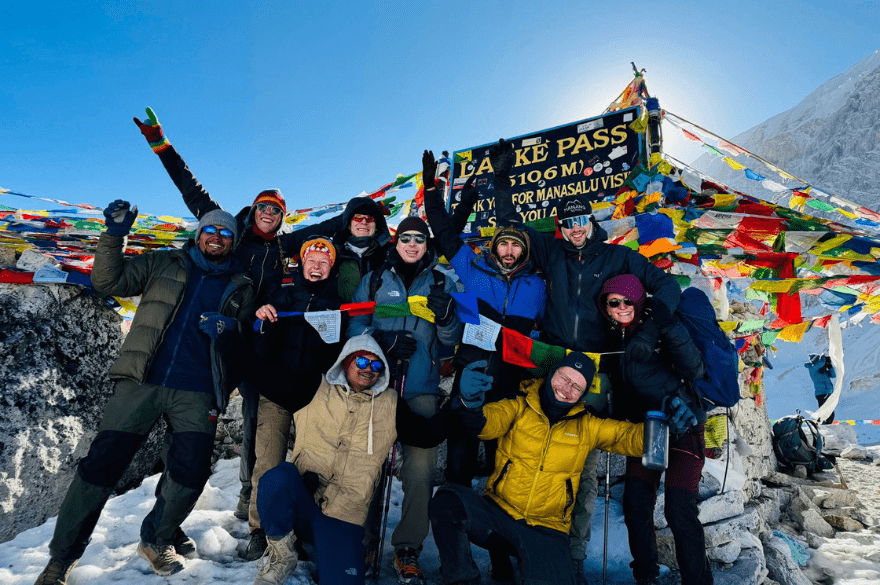
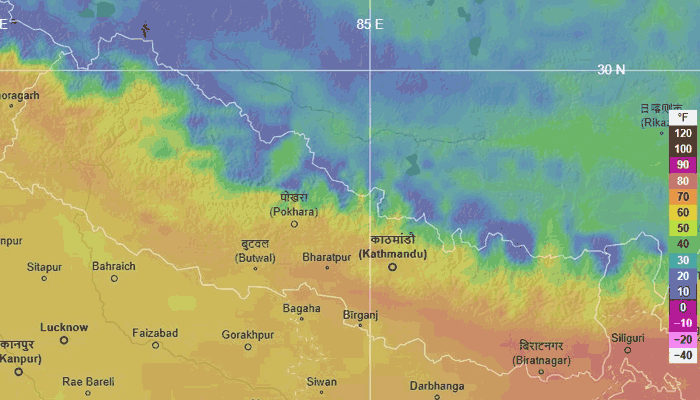
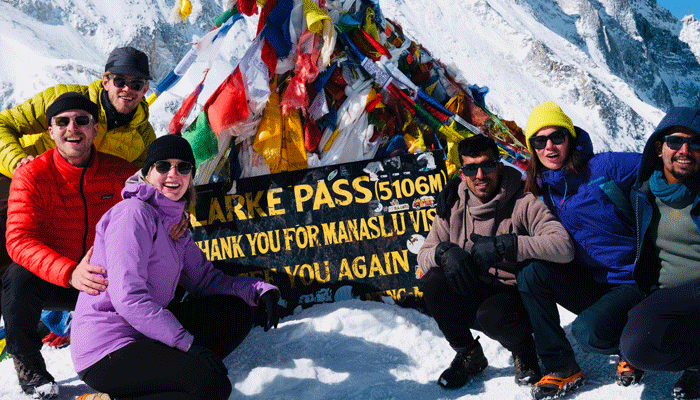

.jpg)
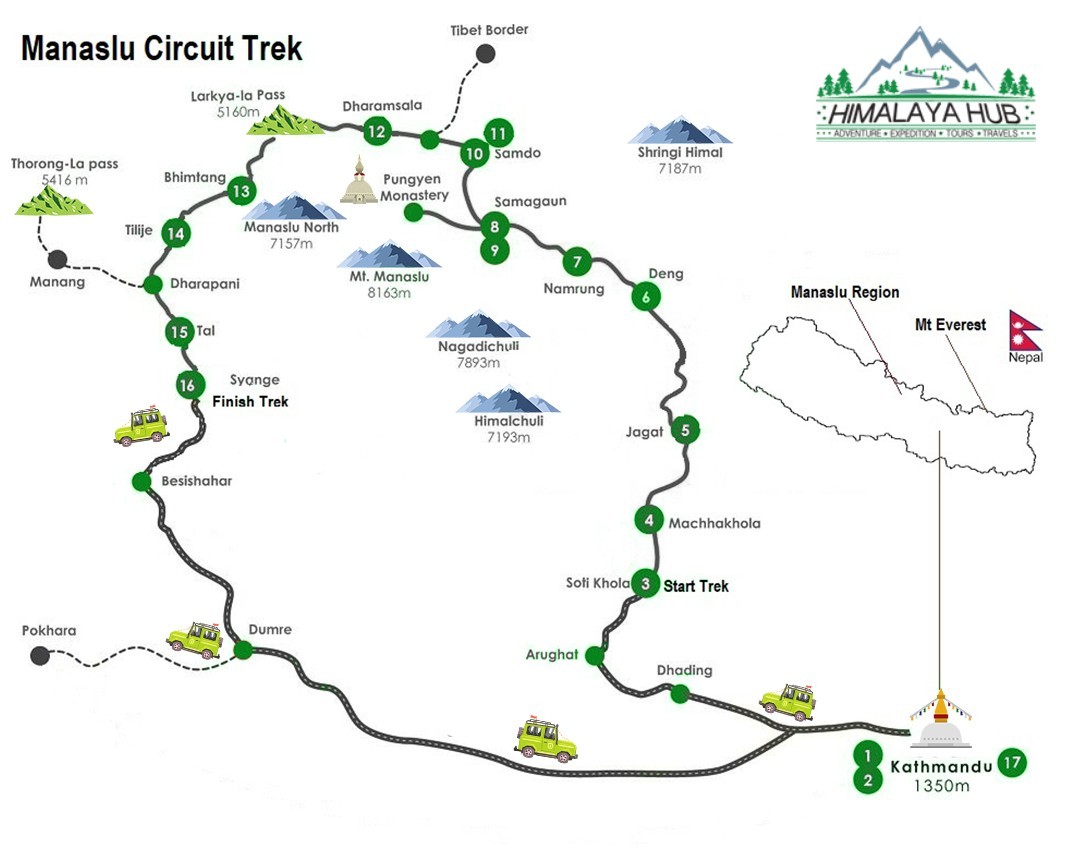




.jpg)
